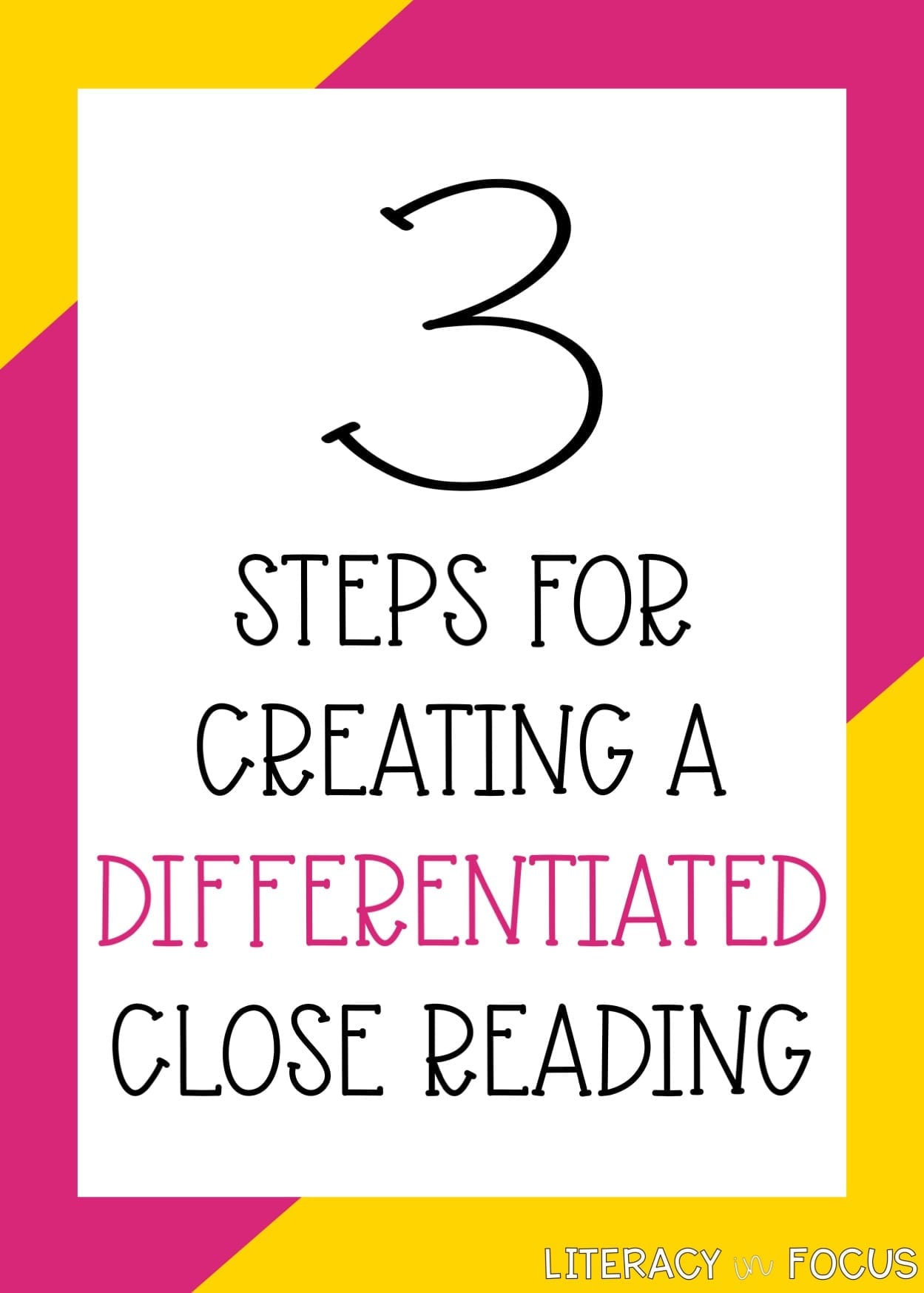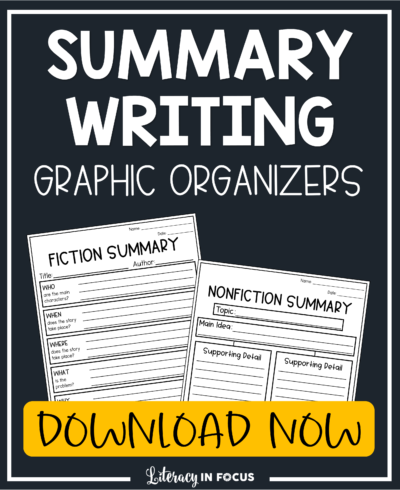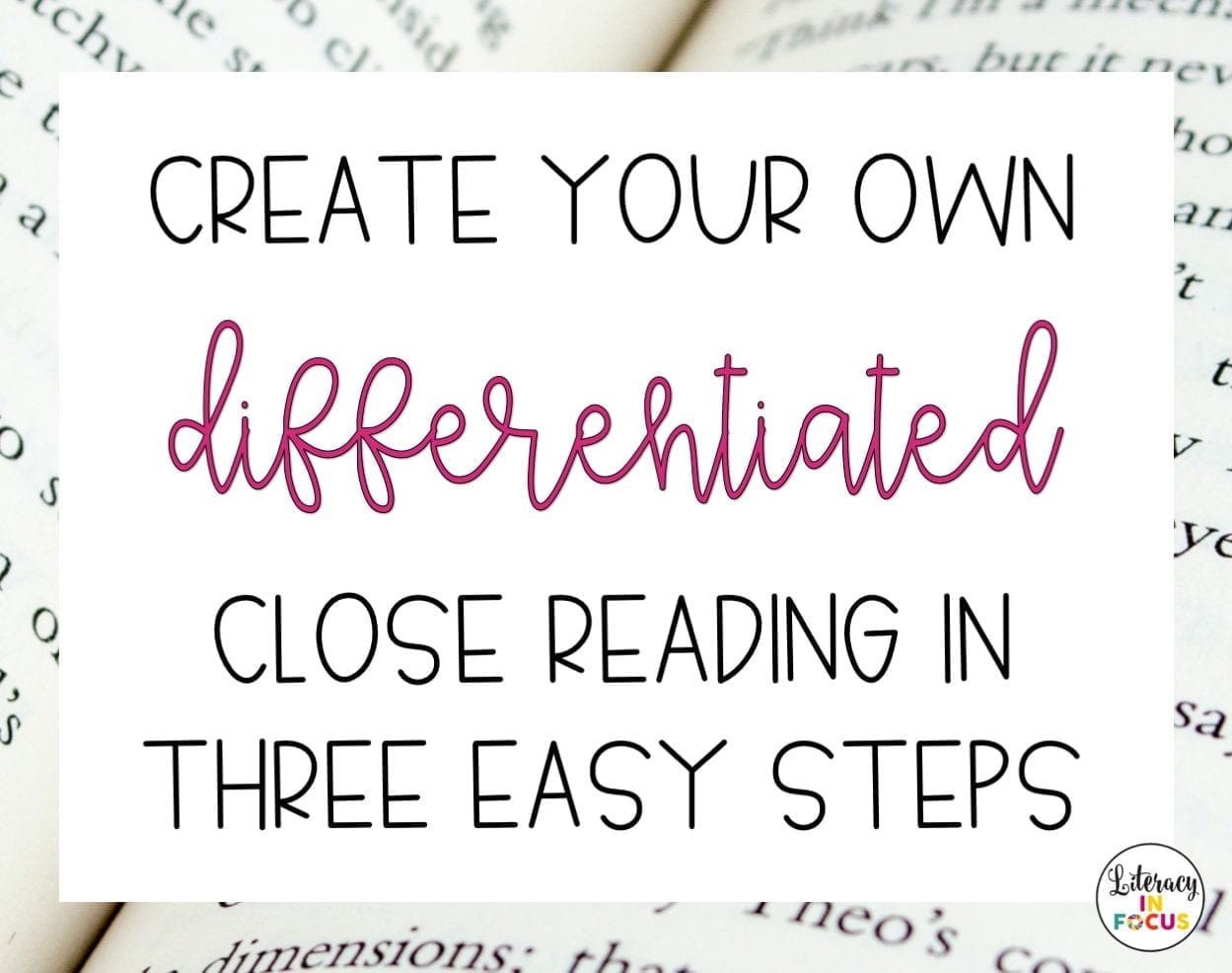
I think most teachers would agree that our class sizes are growing and our student populations are getting more diverse. While growing class size leaves much to be desired, a diverse group of students is something to celebrate. Even though diversity in the classroom is something we would all like to have, it makes lesson planning and content creation a bit more challenging. Creating differentiated close reading lessons is one way to tackle the task of teaching multiple levels of student proficiency at the same time. The three steps outlined below will walk you through all you need to know to create your own differentiated close reading.
Choosing Your Text
A successful close reading lesson requires high quality texts. In order to challenge students and encourage critical thinking, the text you choose should require a fair amount of rigor. You want to find texts that are short, complex, and lend themselves to the close reading process. First, assess the overall quality of writing and length of the text. Next, determine if the text is appropriate for your students by assessing the reading level and subject matter. Finally, make sure the text includes layers of meaning for a deep dive into synthesis and analysis. Ideally, you want to select a text with depth, potential for discovery, rich language, and room for interpretation. What is your objective for the lesson? Will your text selection lead students to the desired outcome? Please note that you do not have to use an entire text for a close reading. A section or paragraph of text that meets the criteria mentioned above will work just fine.
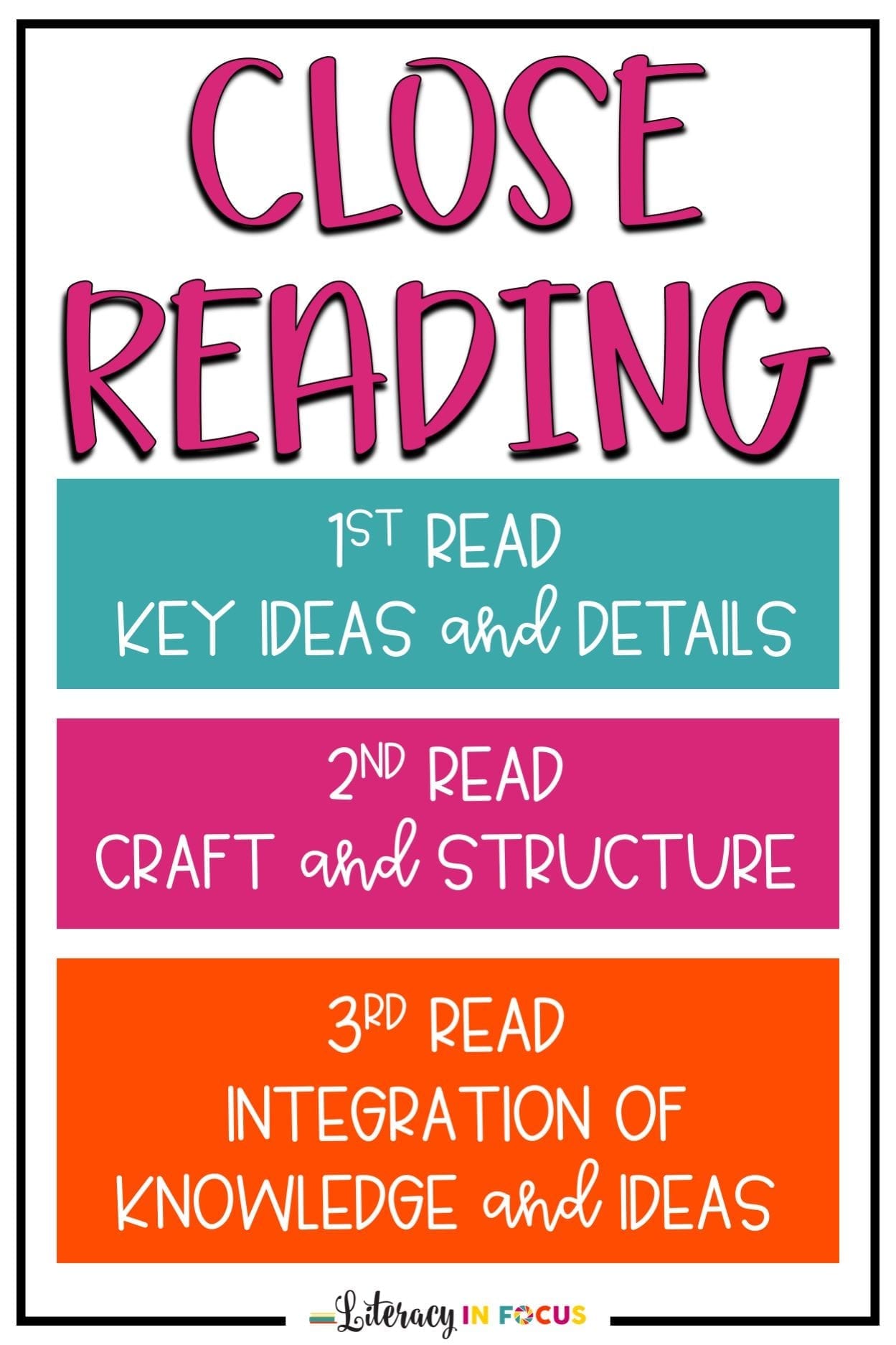
Setting Your Objectives
What skills do you want your students to master? Starting with your content standards and working backwards will help you narrow down your focus. I like to choose one standard to focus on, and I build my close reading around that specific standard. That way, I ensure that my lesson is standards-based, and I have a set target when it comes time for assessment. As the lesson progresses, students will have opportunities to meet the planned objectives. Setting objectives for each reading of the text scaffolds learning and gives students a chance to build their confidence before diving deeper into integration.
Structuring Your Lesson
You are now prepared to add structure to your differentiated close reading. The strategy of close reading is a specific process that requires three readings of the text in order for students to hit three interpretative goals: what the text says, how the text says it, and what the text means. Even though your students are at different levels of proficiency, all will complete three readings of the text. The only difference for each level of proficiency will be the length of text. Your advanced students will have more text to work through than your emerging students.
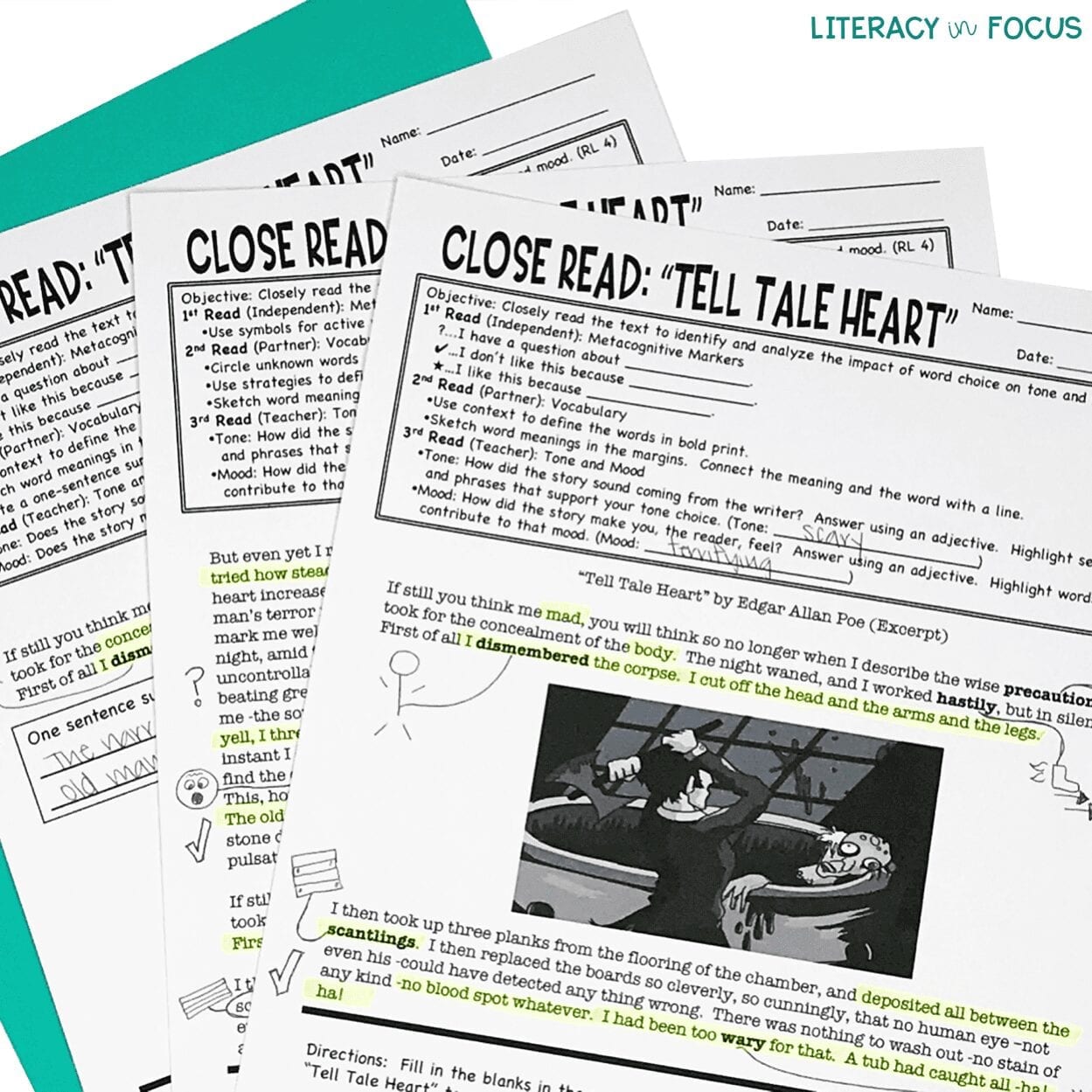
There is no need to find different reading passages. Simply shorten the passage you have chosen for your close reading. After adjusting the text length to meet the diverse needs of all students in your classroom, you are now ready to build the framework for instruction. The first reading of the text should focus on key ideas and details. During or after the first reading, I have students read independently and annotate the text with metacognitive markers. The next reading of the text can be completed as a partner read. This reading should focus on craft and structure, which is a great time for students to identify and define unknown vocabulary words. Learning new vocabulary in context will assist students in learning and remembering the new words. Finally, for the third reading of the text, I like to have students listen as I read aloud. The final reading is a great opportunity to dive deeper and encourage critical thinking. Writing prompts, open-ended questions, fill-in-the-blanks, and sentence frames work well for assessing student understanding after the third reading of the text.
Download the FREE Differentiated Close Reading Planning Template from Literacy in Focus on TpT
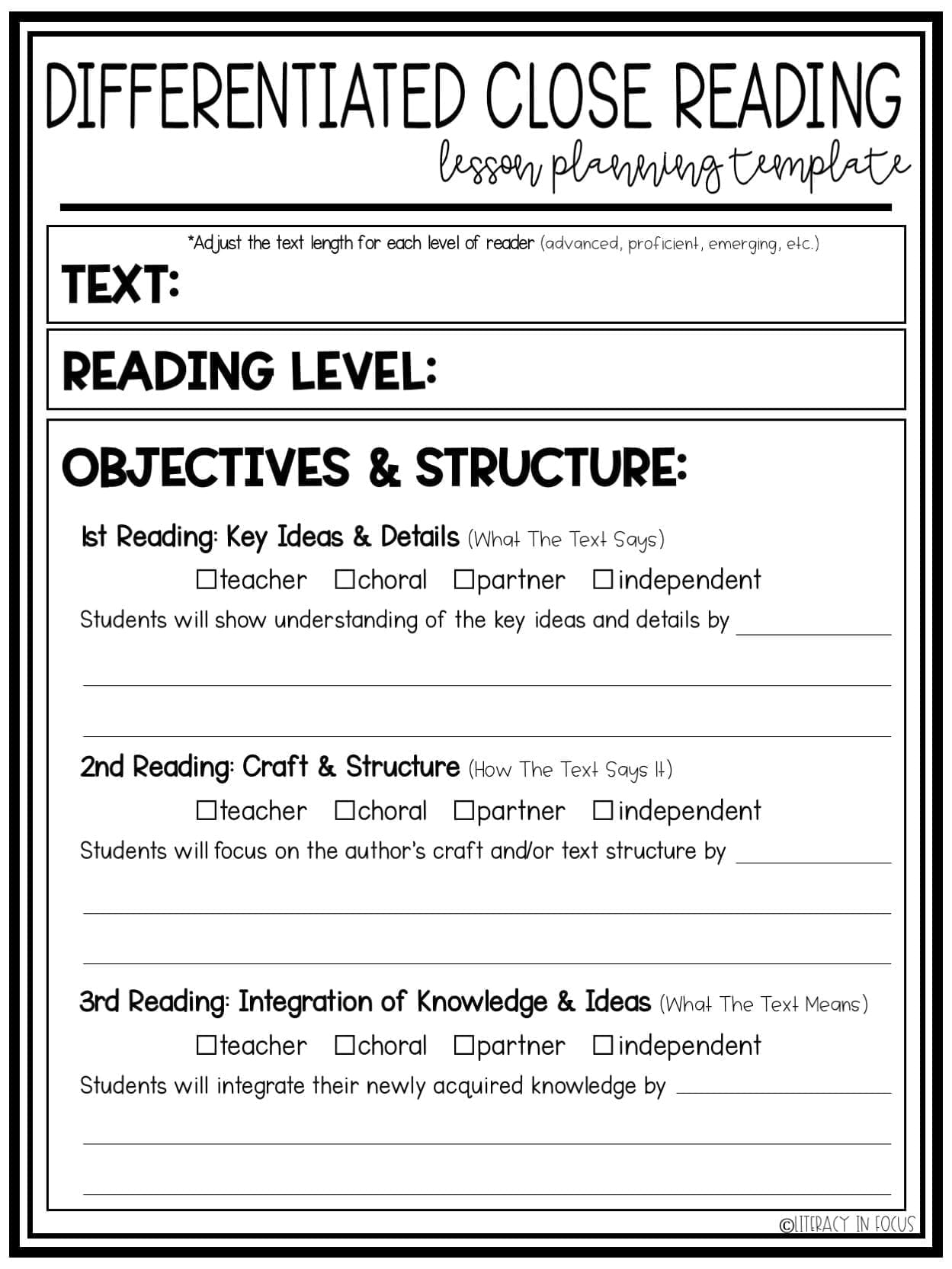
By the third and final reading of the text, all of your students will have had the opportunity to meet the lesson objectives. Scaffolding the lesson in such a way gives each student a chance to work with the text in a progressive manner. Crafting differentiated close readings takes practice, but once you get the hang of it, you can set them up the same way each time. Over time, your students will get the hang of it too! If you want to see a specific example, or you want a model to work from, I use a differentiated close reading to teach tone and mood using Edgar Allan Poe’s “Tell Tale Heart”.

Great for a class of 36 who are all at different levels. -Katy K.
